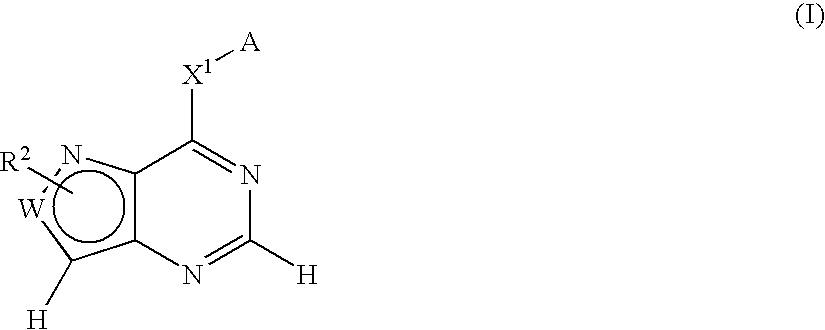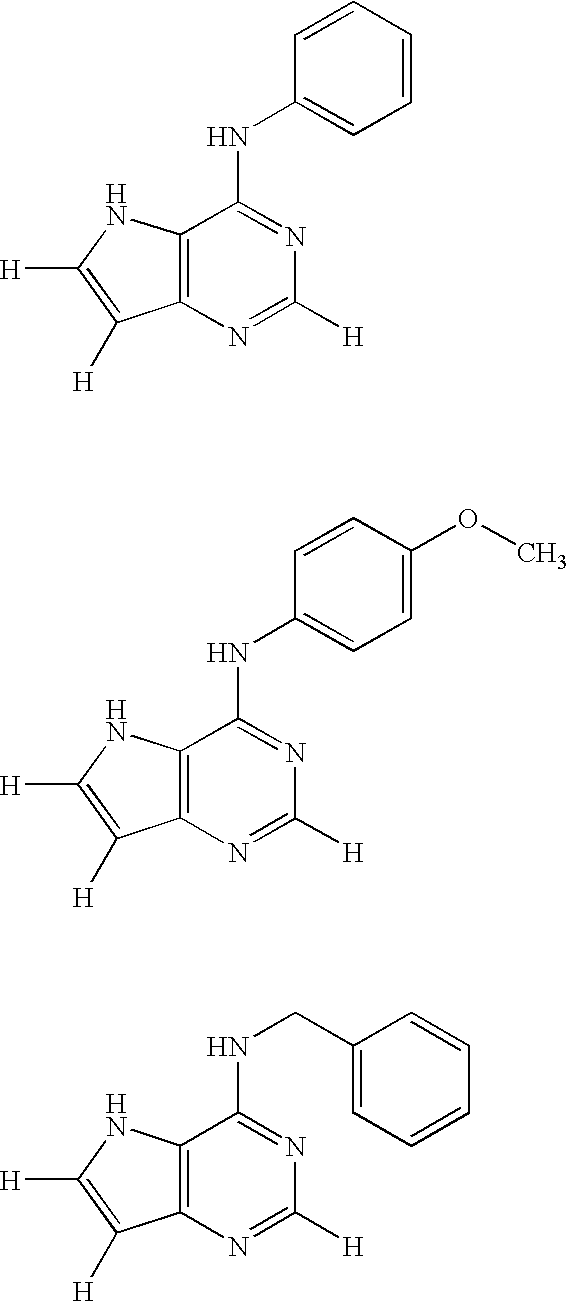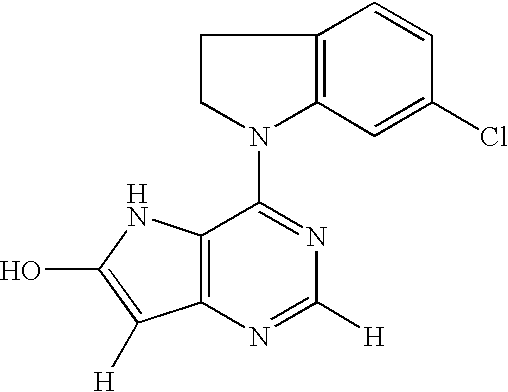Fused Heterocyclic Compound
a heterocyclic compound and compound technology, applied in the field of pyrimidine compound, can solve the problems of poor prognostic factor, poor receptor expression, high expression and simultaneous expression of each of these receptors, and achieve the effect of superior tyrosine kinase inhibitory action, high therapeutic value and low toxicity
- Summary
- Abstract
- Description
- Claims
- Application Information
AI Technical Summary
Benefits of technology
Problems solved by technology
Method used
Image
Examples
reference example 1
Production of 2-[(2-chloro-4-nitrophenoxy)methyl]benzonitrile
[0366] To a solution of 2-chloro-4-nitrophenol (3.5 g) and 2-(bromomethyl)benzonitrile (4.0 g) in N,N-dimethylformamide (50 mL) was added potassium carbonate (3.7 g), and the mixture was stirred at room temperature for 30 min. After the completion of the reaction, water (50 mL) was added, and the mixture was stirred for 10 min. The resultant pale-yellow solid was collected by filtration. The residue washed with diisopropyl ether, and dried to give the title compound (5.04 g) as pale-yellow crystals.
[0367]1H-NMR (CDCl3) δ 5.44 (2H, s), 7.13 (1H, d, J=9.0 Hz), 7.51 (1H, dt, J=1.2, 7.2 Hz), 7.68-7.80 (3H, m), 8.19 (1H, dd, J=2.7, 9.0 Hz), 8.35 (1H, d, J=2.7 Hz).
reference example 2
Production of 2-[(4-amino-2-chlorophenoxy)methyl]benzonitrile
[0368] To a solution of 2-[(2-chloro-4-nitrophenoxy)methyl]benzonitrile (2.0 g) in ethanol / water (9:1, 40 mL) was added calcium chloride (90%, 427 mg), and the mixture was stirred at 100° C. for 10 min. Reduced iron (90%, 2.6 g) was added at room temperature, and the mixture was stirred at 100° C. for 3 hrs. After the completion of the reaction, the reaction mixture was filtered (celite), and the filtrate was concentrated under reduced pressure. Water was added to the residue and the mixture was diluted with ethyl acetate and washed with water and saturated brine. The organic layer was dried over anhydrous magnesium sulfate, filtered and concentrated under reduced pressure. The residue was purified by silica gel column chromatography (hexane:ethyl acetate:methylene chloride=2:1:1) to give the title compound (1.2 g) as a white solid.
[0369]1H-NMR (CDCl3) δ 3.53 (2H, br s), 5.23 (2H, s), 6.54 (1H, dd, J=2.7, 8.7 Hz), 6.76 (...
reference example 3
Production of 2-[(2-methyl-4-nitrophenoxy)methyl]benzonitrile
[0370] The title compound (8.2 g) was obtained as a pale-yellow solid by the reaction in the same manner as in Reference Example 1 using 2-methyl-4-nitrophenol (5.0 g) and 2-(bromomethyl)benzonitrile (6.4 g).
[0371]1H-NMR (CDCl3) δ 2.37 (3H, s), 5.36 (2H, s), 6.97 (1H, d, J=8.4 Hz), 7.50 (1H, m), 7.65-7.69 (2H, m), 7.76 (1H, td, J=0.9, 7.5 Hz), 8.09-8.14 (2H, m).
PUM
| Property | Measurement | Unit |
|---|---|---|
| temperature | aaaaa | aaaaa |
| temperature | aaaaa | aaaaa |
| reaction time | aaaaa | aaaaa |
Abstract
Description
Claims
Application Information
 Login to View More
Login to View More - R&D
- Intellectual Property
- Life Sciences
- Materials
- Tech Scout
- Unparalleled Data Quality
- Higher Quality Content
- 60% Fewer Hallucinations
Browse by: Latest US Patents, China's latest patents, Technical Efficacy Thesaurus, Application Domain, Technology Topic, Popular Technical Reports.
© 2025 PatSnap. All rights reserved.Legal|Privacy policy|Modern Slavery Act Transparency Statement|Sitemap|About US| Contact US: help@patsnap.com



